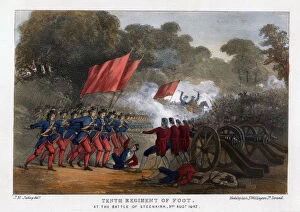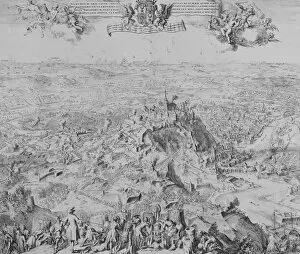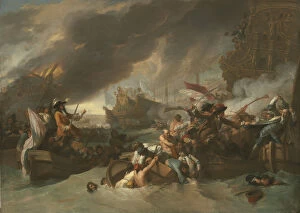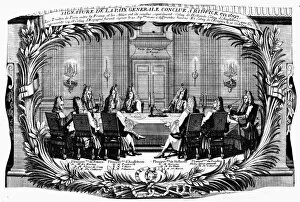Nine Years War Collection (#2)
The Nine Years War, also known as the War of the League of Augsburg, was a significant conflict that took place in Europe during the late 17th century
For sale as Licensed Images
Choose your image, Select your licence and Download the media
The Nine Years War, also known as the War of the League of Augsburg, was a significant conflict that took place in Europe during the late 17th century. This war saw various key events and figures that shaped its outcome. One notable representation of this period is the Gaelic Chieftain sculpture by Maurice Harron in Boyle, Co Roscommon, Ireland. It serves as a reminder of the Irish involvement in this war and their struggle against English dominance. Another depiction is found in a military camp tapestry from the 17th century. This artwork provides insight into the harsh conditions faced by soldiers during this time, showcasing their resilience and determination on the battlefield. A chromolithograph portrays a French naval commander and privateer killing an English admiral in 1694. Such acts of bravery or treachery were common occurrences during this tumultuous era as nations fought for supremacy over trade routes and territories. In contrast to these violent scenes, fireworks celebrating peace between France and the Empire can be seen in another artwork from January 1698. These colorful displays symbolize moments of respite amidst ongoing conflicts. The Landing of King William III after the Peace of Kyswick is depicted through an 1888 painting with unknown authorship. This event marked a turning point towards diplomatic resolution after years of bloodshed. Engravings such as "William III at the siege of Namur" showcase important battles where strategic victories were won or lost throughout this nine-year-long war. Jean Bart's exploits are captured through another chromolithograph highlighting his role as one of France's most renowned naval commanders during this period. Philis de La Tour du Pin de la Charce stands out among female figures who played significant roles behind-the-scenes; her story represents women's contributions to diplomacy and espionage during times when men dominated warfare narratives. The Battle of Camaret lithograph illustrates yet another clash between rival powers vying for control over strategic coastal areas.





